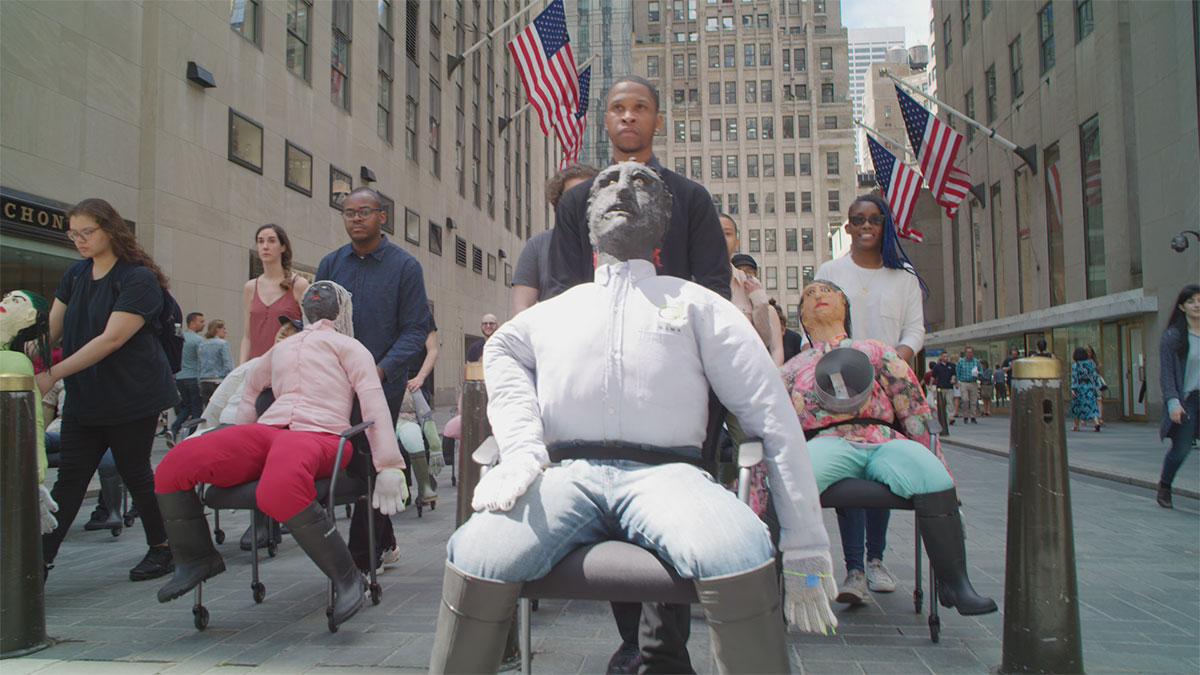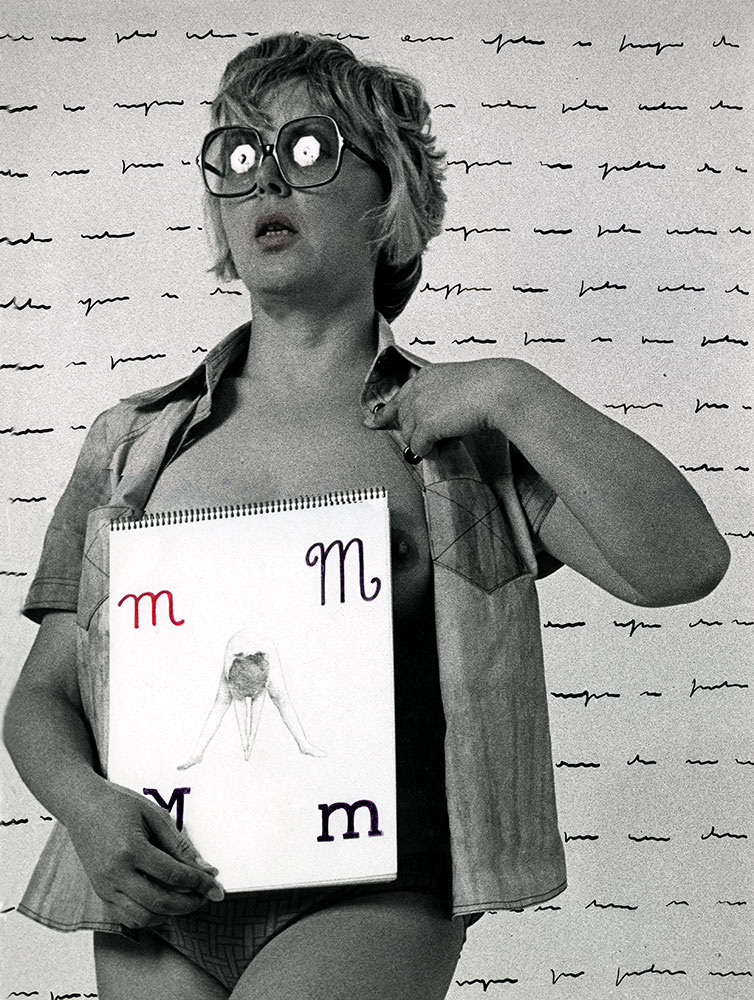PRESENTATION: A Model
 What is the role of museums today? This major three-part exhibition invites international artists to take over Mudam Luxembourg’s galleries and reimagine new models for the museum. The first exhibition “A Model” reflects on the role of museums today. The three-part exhibition, extending until September 2024, considers the urgency to rethink the institution as an active space that presents diverse voices and visions, that is sensitive and receptive to contemporary debates beyond its traditional status as a place of display.
What is the role of museums today? This major three-part exhibition invites international artists to take over Mudam Luxembourg’s galleries and reimagine new models for the museum. The first exhibition “A Model” reflects on the role of museums today. The three-part exhibition, extending until September 2024, considers the urgency to rethink the institution as an active space that presents diverse voices and visions, that is sensitive and receptive to contemporary debates beyond its traditional status as a place of display.
By Dimitris Lempesis
Photo: Mudam Luxembourg Archive

For her first major exhibition since becoming Director of the Museum in 2022, Bettina Steinbrügge has commissioned a dozen artists to create new works in relation to the Mudam Collection and to reimagine museums as active and performative environments, rather than repositories of objects. The exhibition “A Model” is structured around three distinct moments, starting with “A Model: Prelude – Rayyane Tabet. Trilogy” (9/2-8/5/2024), followed by “A Model”, in which new works by international artists unfold throughout the museum (9/2-8/9/2024), and concluding with “A Model: Epilogue – Jason Dodge. Tomorrow, I walked to a dark black star” (4/5-8/9/2024). Oscar Murillo’s “collective conscience” (2015- ) explores the notion of solidarity among museum visitors. The artist is taking his idea of a communal museum experience to Luxembourg by creating an agora where the public can meet and activates the exhibition. Murillo’s effigies, commemorations of the Colombian working class, are already seated in the arena, watching a selection of artists’ and documentary films that explore the history and idea of the museum, projected on a large screen. Isaac Julien’s five-channel video projection “Once Again… (Statues Never Die)” (2022) reimagines the relationship and correspondence, in the early twentieth century, between the philosopher, critic and influential cultural figure Alain Locke and the collector Albert Barnes, who amassed a large collection of African art (as well as European modern art) in his house-cum-museum outside Philadelphia. Intercut with archival footage of looted African artworks held by the British Museum and accompanied by quotes from poets Aimé Césaire and Langston Hughes, the installation proposes a new history of art that contextualises contemporary efforts for reparations. The museum’s outdoor spaces offer unexpected chance encounters. Nina Beier’s “Guardians” (2022), five marble lions lying on the ground, overturns the statues’ associations with ideas of power and royal valour. The installation in the park Dräi Eechelen surrounding the museum highlights that a site is not neutral. Seating interventions by Finnegan Shannon call our attention to the limited accessibility, inclusivity and comfort in public spaces. Two installations in the Jardin des Sculptures reflect on visual and spoken language, on what is allowed and what is forbidden, and on how quality is ascribed to works of art. Su Mei Tse’s iconic fountain, a work from the Mudam Collection, “Many Spoken Words” (2009), showcases disappearing languages, and Claire Fontaine’s installation, photographic floor, offer a powerful dialogue beyond recent history, language and value systems, and reflect on our own responsibilities in shaping and conserving them. Cohabitating in space, Nora Turato and Tomaso Binga’s works both explore word flow as a way of uncovering what it means to live in contemporary society. Bringing together two women artists working in the 1970s and today, respectively, this chapter of the exhibition presents a dialogue on the timeless urgency of creating spaces for women. The works of Anna Boghiguian, Andrea Bowers, Daniela Ortiz and Krista Belle Stewart guide us in recognising diverse realities in relation to often unrepresented societies and overlooked historical events. Rejecting linear, one-dimensional modes of thinking, each of these works discretely call us to pay attention, stay curious and question received truths and narratives. The dolls created by Dardan Zhegrova invite visitors to physically engage with them, while Tony Cokes’s video work “Evil.80.Empathy?” (2020) suggests the necessity for social engagement within the spaces of the museum. Cokes’s use of color, font size and linguistic repetition underlines notions of empathy and complicity in relation to institutional and systemic violence against Black people.
Participating Artists: Alvar Aalto, Sophia Al Maria, James Richmond Barthé, Nina Beier et Bob Kil, Tomaso Binga, Anna Boghiguian, Andrea Bowers, Robert Breer et Pontus Hultén, Matilde Cerruti Quara, Ali Cherri, Tony Cokes, Nayla Dabaji, Jason Dodge, Claire Fontaine, Matthew Angelo Harrison, General Idea, María Jerez et Edurne Rubio, Isaac Julien, Marysia Lewandowska, Hanne Lippard, Renzo Martens, Melvin Moti, Oscar Murillo, Palle Nielsen, Khandakar Ohida, Daniela Ortiz, Walid Raad, Finnegan Shannon, Krista Belle Stewart, SUPERFLEX, Rayyane Tabet, Su-Mei Tse, Nora Turato, Dardan Zhegrova
Photo: Performance: Oscar Murillo, collision of intent (Diego Rivera, Rockefeller Center), 11th June 2019, as part of Collision/Coalition, The Shed, New York, USA, 19 June – 25 August 2019. Videography & video still: Mohamed Sadek. Copyright: Oscar Murillo. Courtesy: the artist and The Shed
Info: Curators: Bettina Steinbrügge, Sarah Beaumont, Clément Minighetti and Joel Valabrega, Mudam Luxembourg – Musée d’Art Moderne Grand-Duc, 3, Park Dräi Eechelen, Luxembourg-Kirchberg,Duration: 9/2-8/5/2024, Days & Hours: Tue & Thu-Sun 10:00-18:00, Wed 10:00-21:00, www.mudam.com/







